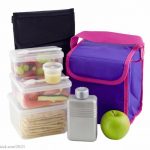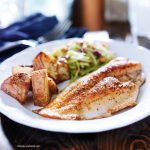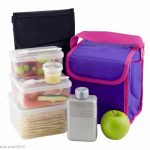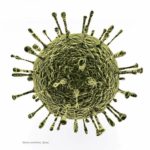Believe it or not it's that time of year again; these back to school lunch safety tips from the USDA will keep your kids healthy all year long. If your child brings a lunch rather than buying lunch at school, these are things you need to know. Children, especially young children, are more likely to have serious consequences from food poisoning, so it's especially important to follow these food safety tips. Dr. Justin Ransom, USDA Food Safety and Inspection Service (FSIS) Administrator said in a statement, "As the school year begins, we want families to keep food safety top of mind, Young children are more vulnerable to foodborne illness, and we want to make sure they stay healthy and ready to learn." First keep cold foods cold. You should use at least two cold sources, such as … [Read more...]
Back to School Meal Prep to Keep Your Family Safe
Get great and easy back to school meal prep ideas and tips to keep your family safe from Foodsafety.gov, including how to pack safe lunches. It's not difficult; you just need to pay attention to certain steps. First of all, make a shopping list before you go to the store. Know which foods and recipes you'll be making for the week, then look in your pantry, fridge, and freezer to find out what ingredients you already have and what you'll need. When you are shopping, pick up perishable and frozen foods last so they stay cold longer. Separate raw meat and poultry products from veggies and fruit, putting them in bags to catch any raw juices. And make sure all of your food is in the fridge or freezer within two hours of checking out. When you start to prepare food, the first thing … [Read more...]
Back to School Lunchbox Safety Tips From the USDA
Get back to school lunchbox safety tips from the USDA to keep your kids safe and healthy all year. The most important thing to remember is to keep hot foods hot and cold foods cold. You can accomplish this by using insulated soft-sided lunch bags, two cold sources, and insulated containers for hot foods. It is not safe to pack lunches in a paper bag. Remember the the danger zone is between 40°F and 140°F. Food should be colder or hotter than that range. In the danger zone, bacteria can double in food in 20 minutes. And pack a disposable wipe, or remind your child to wash their hands before eating. For cold lunches, use a soft sided lunch bag and include at least two cold sources. You can use two frozen gel backs that are at least 5 inches by 3 inches, or combine a frozen gel pack … [Read more...]
USDA Offers Guide to Food Safety For School Lunches
Yes it's that time of the year. The USDA is offering parents a guide to food safety for school lunches. There is an inherent risk in packing perishable foods for your child to take to school every day, but with these rules you need to follow you can make sure the food stays safe to eat. USDA Under Secretary for Food Safety Dr. Emilio Esteban said in a statement, "While there have been huge strides in food safety, at least 48 million people in the U.S. are still affected by foodborne illness every year. Our children’s health and safety depend on the safe food handling practices we teach and practice at home." Food safety for school lunches starts in your kitchen. When you prepare food for your child's lunch, and your own too, follow the steps of clean, separate, cook, and chill. … [Read more...]
At Least 130 Sick in Norovirus Outbreak at Las Vegas School
A bout of vomiting last week at the Wayne N. Tanaka Elementary School in Las Vegas, Nevada was caused by norovirus, according to news reports. At least 130 kids were projectile vomiting at this norovirus outbreak at Las Vegas school, according to MSN. The children were sickened during the school day. That quick onset does point to norovirus as the culprit. And that pathogen was confirmed in lab tests a few days ago that were conducted by the Southern Nevada Health District. Norovirus is very contagious and is spread through contaminated food and drink, through contact with surfaces (fomites), and also through person-to-person contact. Symptoms of norovirus include vomiting, nausea, stomach pain, and diarrhea. Some patients may also have fever, headache, and body aches. Most … [Read more...]
It’s Back to School Time! USDA Has Safe Lunch Box Tips
It's back to school time! Many schools are starting in the next couple of weeks. And the USDA has safe lunch box tips to keep your child's lunch healthy and free from pathogens. More than 50,000,000 kids attend schools in the United States. A large percentage of them bring lunches from home. These lunches can be healthy, but if they are made with perishable items such as cooked meats, chicken, cheese, or egg, they must be kept at a safe temperature to prevent illness. For a safe lunch box and bag, start with an insulated lunch bag or box. Brown paper bags are not appropriate for any foods other than whole apples and cookies. The bag should be packed with a frozen gel pack or a frozen juice or drink box or water bottle to make sure that the food is kept out of the danger zone of … [Read more...]
Learn How to Pack a Safe School Lunch For Your Kids
Learn how to pack a safe school lunch this year with tips from Oklahoma State University Extension. While many children get free school lunches, some do prefer to bring a lunch from home. And parents need to be very careful about packing a safe lunch, since children are far more susceptible to serious complications from food poisoning than adults. An improperly packed sack lunch can make kids sick, especially if the food isn't kept cold or hot, out of the danger zone of 40°F to 140°F. Pathogenic bacteria can double in food in 20 minutes while in that temperature range. First, make sure that you purchase a safe lunch box. A double sided insulated box, when packed with a frozen juice box or frozen gel packs, will keep food at a safe temperature for hours. A good thermos should be … [Read more...]
Learn to Prepare Safe Lunches For Back to School By Following Rules
The USDA is helping parents learn to prepare safe lunches for back to school. Many schools are opening next week, so it's time to start planning for what your child will eat. While cafeteria workers take food safety training classes, parents do not. So it's important to learn the basic rules of safe food preparation: Clean, Separate, Cook, and Chill. First, always wash your hands with soap and water before preparing food. Make sure the countertop is clean and that all of your utensils and surfaces are clean. Make sure to remind your children to wash their hands with soap and water before eating. And learn how to wash your hands correctly. Always keep raw meats, poultry, eggs, and seafood away from foods that are eaten raw. Using a separate cutting board for raw meats and … [Read more...]
Back to School Food Safety For Bag Lunches From the USDA
It's back to school time, and that means kids are going to be bringing bag lunches to school. Did you know that if those bags contain perishable foods, they must be handled and stored properly? The USDA has tips to help you keep your child safe. Harmful bacteria, such as Salmonella, E. coli, and Listeria monocytogenes, multiply quickly in the Danger Zone temperature range of 40 °F and 140°F; that includes room temperature. Perishable foods that are held without an ice source, or without refrigeration, won't stay safe to eat for long. So here's what to do. First, all perishable foods, such as meat, poultry, fish, and eggs, must be kept cold at all times. When you're at the store, buy those foods last, go home immediately, and refrigerate them immediately. No perishable … [Read more...]









